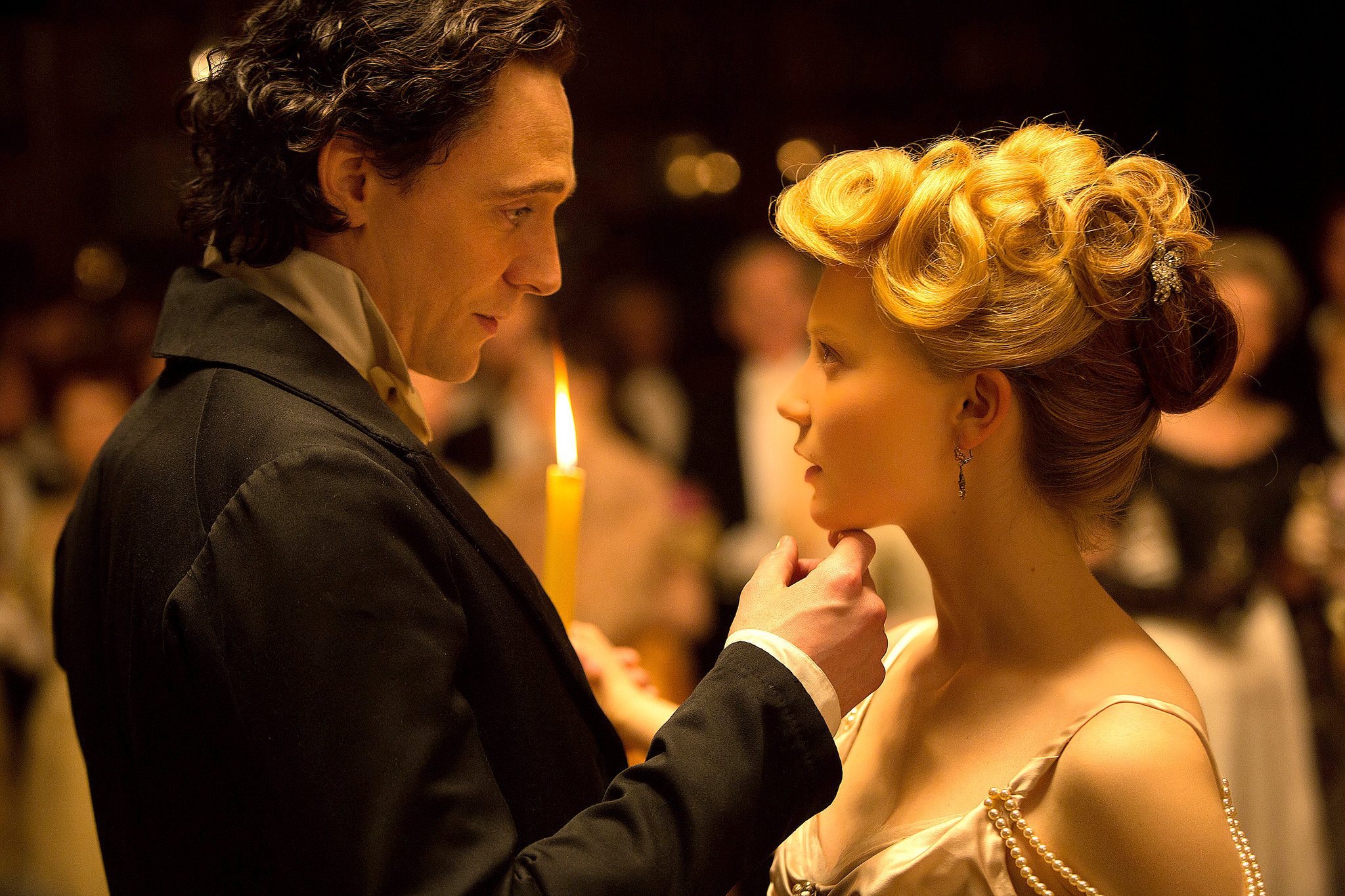Guillermo del Toro never does anything halfway. When he takes on Gothic horror in 2015’s Crimson Peak, he doesn’t just add a superficial period gloss to a modern horror story; he makes a movie that feels like it could have been adapted directly from a 19th-century Gothic novel. Set in 1887, Crimson Peak fits perfectly in a tradition stretching from the Brontë sisters to Alfred Hitchcock’s Rebecca to Henry James adaptation The Innocents, and forward to Mike Flanagan’s two Haunting miniseries on Netflix. It’s not entirely surprising, then, that Crimson Peak doesn’t have the fan following of del Toro’s popcorn blockbusters like Pacific Rim or the Hellboy movies. Crimson Peak’s debut today on Netflix (alongside Flanagan’s popular shows) should put it in front of a new audience, and it’s every bit the loving homage that those other del Toro movies are. Del Toro has the same affection for the Gothic that he has for kaiju or comic books.
The movie opens with a flash-forward (a crimson peek, if you will) to Edith (Mia Wasikowska), bloody and stumbling through a snowy white landscape, as she delivers florid narration reminiscent of the famous opening lines to Rebecca. While Rebecca only hints at the supernatural, though, Crimson Peak embraces it from the start. “Ghosts are real,” Edith says. “This much I know.” She recounts the story of her childhood encounter with the ghost of her mother, who died when Edith was 10 years old. It’s not a comforting experience, and Edith’s mother doesn’t express love or longing. She issues a warning, one that young Edith doesn’t understand at the time: “Beware of Crimson Peak.”
The ghosts in Crimson Peak are terrifying but also helpful, crying out not in malice but in anguish. It takes a while before Edith learns this truth, and after the opening scenes, Crimson Peak slows down a bit, findingcutting to adult Edith 14 years after her mother’s death, living in Buffalo, New York, with her businessman father Carter Cushing (Jim Beaver). Given del Toro’s well-documented cinephilia, it’s unlikely that Edith’s family name is a coincidence, and her world is shaken by the presence of the suave and somewhat mysterious English baronet Sir Thomas Sharpe (Tom Hiddleston), the kind of character that Peter Cushing might have played in a 1960s Hammer production.

Del Toro takes his time building the romance between Edith and Thomas, and for a long stretch of the movie there’s no horror at all, even though every scene is filled with tension and uneasiness. Thomas is sophisticated and debonair, but there’s also clearly something not quite right about him, which Edith’s father senses immediately. Edith, however, falls under his spell, and he’s the kind of character that she’s been writing about in the stories she’s attempting to sell to publishers. “It’s more a story with a ghost in it,” she tells an editor who describes her manuscript as as a ghost story, and when another character refers to her as “our very own Jane Austen,” Edith responds that she’d rather be compared to Mary Shelley.
Once Thomas whisks Edith away to Allerdale Hall, his majestically crumbling estate in England, Crimson Peak, too, becomes a story with a ghost in it—multiple ghosts, really. Thomas and his sister Lucille (Jessica Chastain) are in Buffalo trying to drum up investments for the mining of red clay on the Sharpe family land, and while Carter is unimpressed with Thomas’ business proposal, Edith is much more amenable to his marriage proposal, especially after her father dies in a sudden “accident.”

The wait for the movie to get to Allerdale is more than worth it, and del Toro combines elaborate set design with CGI augmentations for a labyrinthine mansion that rivals The Shining’s Overlook Hotel. It’s gorgeously decrepit, with a perfectly placed opening in the ceiling to allow snow to fall artfully, and blood-red clay “bleeding” through every crevice in the floors and walls.
In grand Gothic fashion, Allerdale contains secrets behind every door, and of course Lucille carries a giant key ring that allows her access to every room in the house, which she keeps from Edith. If Thomas uses his charm and good looks to cover for his dark intentions, Lucille doesn’t even bother. She’s introduced playing piano at a society reception in Buffalo, and even the way she performs a piece of music is somehow sinister. Chastain is delightfully cruel as Lucille, who bears such a look of disgust on her face when Edith kisses her on the cheek that you’d think she was just licked by a rat. She’s Rebecca’s title character and Mrs. Danvers combined into one, yet even more contemptuous and condescending.
But it’s the perpetually underrated Wasikowska who holds Crimson Peak together, as a smart, capable woman who’s never a damsel in distress, even when she’s completely under Thomas’ spell. The more she learns about the horrors of Allerdale, aided by the ghosts who reside there, the more proactive she becomes, investigating the Sharpes’ past and opening those forbidden doors. The vintage book cover that shows up during the closing credits, which reads “Crimson Peak by Edith M. Cushing,” marks her final triumph—and could easily take its place on a shelf alongside both Jane Austen and Mary Shelley.
“Crimson Peak” is now streaming on Netflix.



